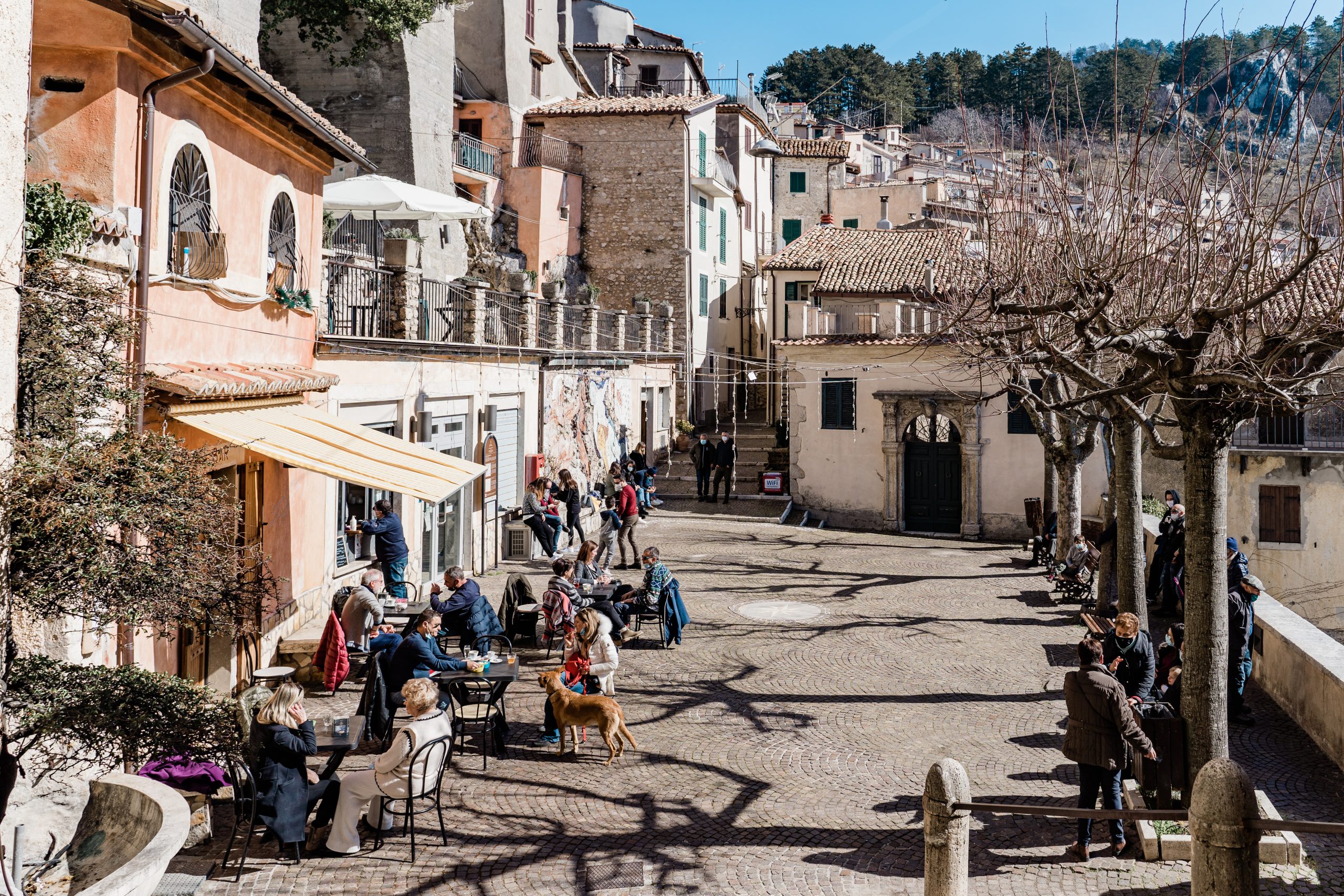
If you need to learn Italian for a trip to Italy, or simply to impress your friends with your language skills, learning to say “you’re welcome” in Italian is a great way to start.
Plus, the Italian culture puts a lot of emphasis on being pleasant and showing good manners, so being able to respond to the word grazie (“thank you”) will surely make you sound (and feel!) like a native speaker.
Before you continue, if you still do not know how to thank someone in Italian, have a look at our guide on all the different ways to say thank you in Italian.
So, do you want to learn how to say “you’re welcome” in Italian? In this article, we will look at all the expressions Italian speakers use to say “you’re welcome”, from the most widely used to the formal ones.
Ready to go? Let’s start!
The Easiest Way to Say “You’re Welcome” in Italian
If you ask an Italian speaker how to say “you’re welcome”, the first word they will come up with will surely be prego.
- – Grazie mille! (Thank you very much!)
– Prego. (You’re welcome.)
The word prego actually comes from the first-person singular of the Italian verb pregare, which means to pray.
Nowadays, of course, it acquired its own meaning, and it is used both in formal and informal situations to say “you’re welcome” in Italian. You can use it to respond to grazie in all kinds of situations, with your family or your boss, with one person or in a big group.
Here is an example in a conversation:
- – Passami il sale, per favore.
– Eccoti!
– Grazie.
– Prego.
– Pass me the salt, please.
– Here you are.
– Thanks!
– You’re welcome.
Other Uses of Prego
You will also hear the word prego in other contexts with a different meaning. For example, it is often used to politely invite someone to do something. In this case, it can be translated as “please”.
- Prego, si sieda.
Please, sit down.
Another context in which you might hear this word a lot is in restaurants and bars. Waiters often come to your table and just say prego to invite you to place your order.
- – Posso ordinare?
– Prego…
– Can I order?
– Please, go ahead.
If you’re entering a building, or getting on or off a train, the person next to you might also say prego to invite you to go ahead. In this case, it is just the same as saying “after you”.
As you can see, most of the time this word has nothing to do with praying, although it does come from there:
- Io prego spesso prima di andare a dormire.
I often pray before going to sleep.
Different Ways to Say “You’re Welcome” in Italian

Sure, prego is by far the most common way to answer when someone is thanking you in Italian, but it is definitely not the only one!
Here are some of the other expressions you might hear from Italians. If you learn them and start using them in everyday conversation, you will definitely make a good impression and even sound like a native speaker.
Here are 7 more ways to say “you’re welcome” in Italian.
Di Niente / Di Nulla
This is the Italian equivalent of the Spanish “de nada”. It literally translates as “for nothing” and you can use it to somehow reduce the importance of what the person is thanking you for, and let them know it was no hassle for you at all.
Niente and nulla are completely interchangeable, so just pick the one you like best!
Here’s an example of how you’d use it:
- – Grazie mille per il tuo aiuto!
– Di niente, quando hai bisogno, chiamami.
– Thank you so much for your help!
– It was no problem at all, call me when you need me.
Figurati – Si Figuri
This is a great expression, and you will hear it A LOT in Italian conversation. It is the same expression, in its informal and formal versions, and it stands for “Don’t mention it”.
- Figurati is the informal version (which uses tu – informal you), which you can use with friends and family, or people you have a closer relationship with.
- – Giacomo, grazie per essere andato a prendere Greta a scuola.
– Figurati, passavo proprio di lì quando mi hai chiamato.– Giacomo, thank you for picking Greta up from school.
– Don’t mention it, I was just around there when you called.
- – Giacomo, grazie per essere andato a prendere Greta a scuola.
- Si figuri is the formal version of the same expression (lei – formal you) and you can use it with older people, or in more official settings, like in a bank, or with your university professors.
- – Signora Grandi, grazie per il suo aiuto durante il progetto.
– Si figuri, ho solo fatto il mio dovere.– Mrs. Grandi, thank you for your help during the project.
– Don’t mention it, I just did my job.
- – Signora Grandi, grazie per il suo aiuto durante il progetto.
Non c’è di Che / E di Che?
These are also two very similar versions of the same expression. Non c’è di che literally means “there is nothing (to thank me for)” and e di che? Stands for “and what for?”.
Use these when you want the other person to know that you did what you did with pleasure, and they shouldn’t really be thanking you.
Both expressions (especially e di che?) are quite informal.
- – Alba, grazie mille!
– E di che?
– Alba, thank you so much!
– And what for? (Don’t mention it!)
Non c’è Problema
This literally means “(there is) no problem” and it can be used in the same way as in English.
It is quite common to use it when someone is thanking you for a favor you helped them with.
- – Grazie per il tuo aiuto.
– Non c’è problema.
– Thanks for your help!
– No problem.
Ci Mancherebbe Altro
This is one of my favorite expressions to say “you’re welcome in Italian”. It means something like “how could I have done otherwise?”.
Use it when the other person is very thankful, but you feel you were very happy to help, and in fact you couldn’t have done otherwise!
It can also be shortened to just ci mancherebbe!
- – Grazie per essere passata a salutarmi!
– Ci mancherebbe altro!– Thanks for passing by to say hello!
– Don’t mention it! (How could I have done otherwise?)
È Stato un Piacere
This literally means “it was a pleasure”, and it emphasizes the fact that we did not do whatever we’re being thanked for reluctantly, but that we really wanted to do it, and it gave us pleasure too.
It can be used both in formal and informal situations, and it certainly will make you leave a great and charming impression!
- – Grazie per avermi accompagnato a casa ieri sera.
– È stato un piacere!
– Thanks for taking me home last night.
– It was my pleasure.
Grazie a te / a lei / a voi
Last but not least… Grazie a te is used when someone is thanking you, but you want to thank them back! In Italy, this is a very common way of saying “you’re welcome”.
Of course, you will need to change the personal pronoun depending on who you’re thanking.
You can say grazie a lei in formal situations, or grazie a voi if you are thanking more people at a time.
You can also start the sentence with a no to give it even more emphasis, like: “No, I am the one who should be thanking you!”
- – Grazie di tutto, arrivederci.
– No, grazie a voi. Buona serata!– Thank you for everything, goodbye.
– No, thank you. Have a great evening!

How to Say “You’re Welcome” in Italian: Final Tips
I really hope you will be able to practice with each one of these expressions to respond to an Italian grazie!
Sometimes, you will notice that Italian speakers even combine some of these expressions: listen to them carefully and try to repeat what they say… and don’ t be afraid to experiment and use them in all kinds of situations, too.
You will also notice that, a lot of the times, native speakers add a ma (literally “but”) to the beginning of these expressions. This particle is just used to give more emphasis to the expression, something like saying “you’re very welcome”.
- Ma figurati! / Ma ci mancherebbe altro!
Don’t even mention it!
Practice makes perfect! So, here are some of the most common combinations you might hear, in context:
- – Martino, grazie davvero per essere venuto a prendermi.
– Prego, non c’è di che.– Thank you, Martino, for coming to pick me up.
– You’re welcome, don’t mention it. - – Grazie a tutti per il vostro impegno nel progetto.
– Ci mancherebbe altro, grazie a voi!– Thanks everyone for your help with the project.
– Don’t mention it, thank you! - – Ti ringrazio per avermi detto la verità.
– Ma figurati, ci mancherebbe.– Thank you for telling me the truth.
– Don’t even say it, how could I do otherwise. - – Grazie Marco, non so cosa farei senza di te!
– Di nulla, non c’è problema.– Thank you Marco, what would I do without you!
– Don’t mention it, no problem.
Clozemaster has been designed to help you learn the language in context by filling in the gaps in authentic sentences. With features such as Grammar Challenges, Cloze-Listening, and Cloze-Reading, the app will let you emphasize all the competencies necessary to become fluent in Italian.
Take your Italian to the next level. Click here to start practicing with real Italian sentences!

